Holst's Super-Green Willamette Valley House
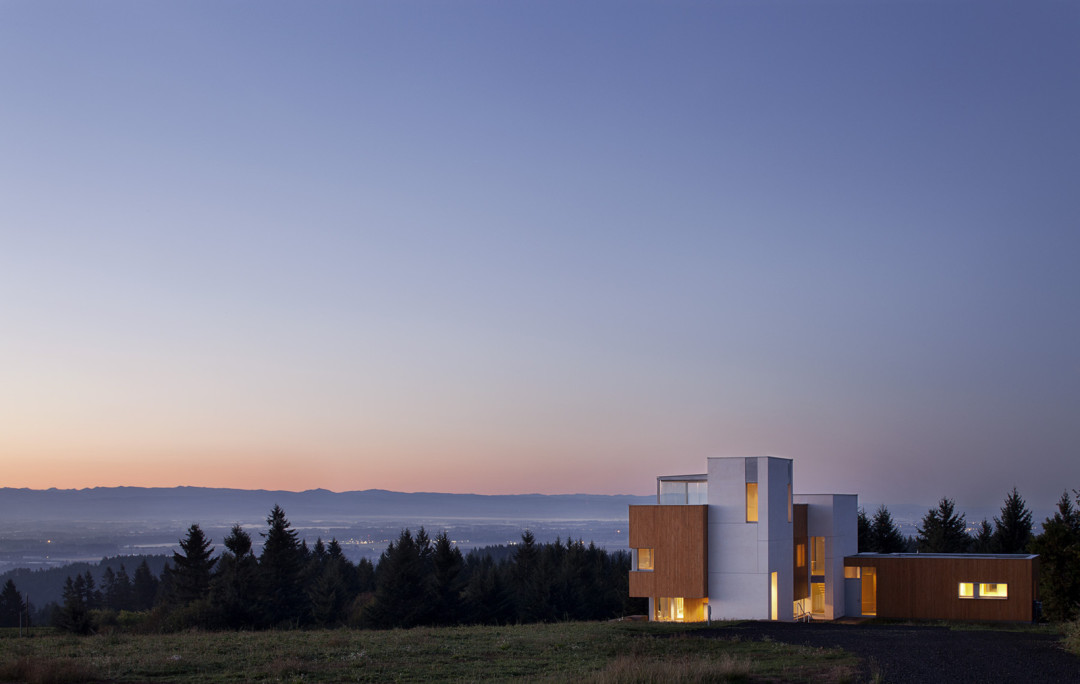
The story of Karuna House begins with an unbuilt project. Portland's Holst Architecture designed a home for Eric Lemelson, the philanthropist founder of acclaimed Lemelson Vineyards, heir to a fortune built on the inventions of his legendary father, Jerome. For various reasons, the project never got off the ground, but Lemelson and Holst stayed in touch.

Three years ago, Lemelson called Holst partner Jeffrey Stuhr, enthused by a magazine article he'd found on Minergie, a Swiss energy-efficiency standard. (This account derives from a recent interview with Stuhr and his Holst cofounder, John Holmes.) "He asked if I was up for a trip to Switzerland," Stuhr recalls. "You don't say no."
The voyage proved the first step towards this summer's completion of Karuna House, a gleaming outpost perched on some of Lemelson's verdant Willamette Valley farmland. The house, which Lemelson envisions as a green-construction case study of sorts, aims for a triple sustainability milestone that the firm says is unprecedented: certification not only under Switzerland's Minergie, but also the Passive House Institute US's PHIUS+ standard, and the LEED For Homes Platinum standard. Holst's architects believe the house is the world's first to achieve all three. (The LEED certification is currently pending, but anticipated. The other two are signed and sealed.)
The three programs all emphasize different energy efficiency metrics and techniques. The Passive House focus on passive solar heating, for example, required Holst to import triple-paned window glass and and adjustable exterior window shades—both well-known in Europe but rare in the United States. Minergie, on the other hand, emphasizes tight insulation.
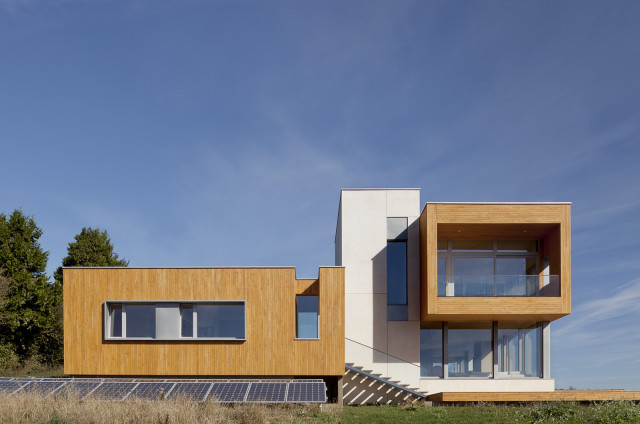
While the building's green aspirations are impressive, the Holst principals are just as proud of Karuna House's aesthetic. "We presented a number of possible design directions, and Eric chose the most modern option," Stuhr says. "Green buildings tend to get a little deriviative of 1970s design. Our challenge to ourselves was to design a modern, green home—and not let sustainability limit the design."
The home's energy use will be monitored over its first year of use to determine how well the design's multi-pronged sustainability approach is working. Its look, however, is ready for a close-up.
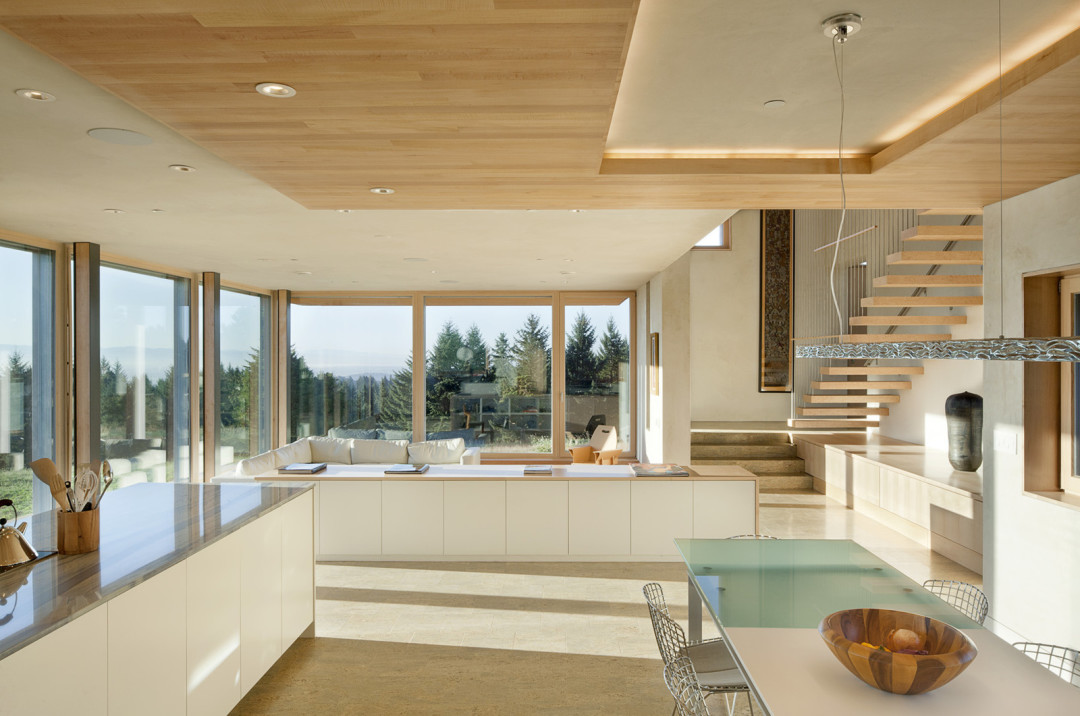
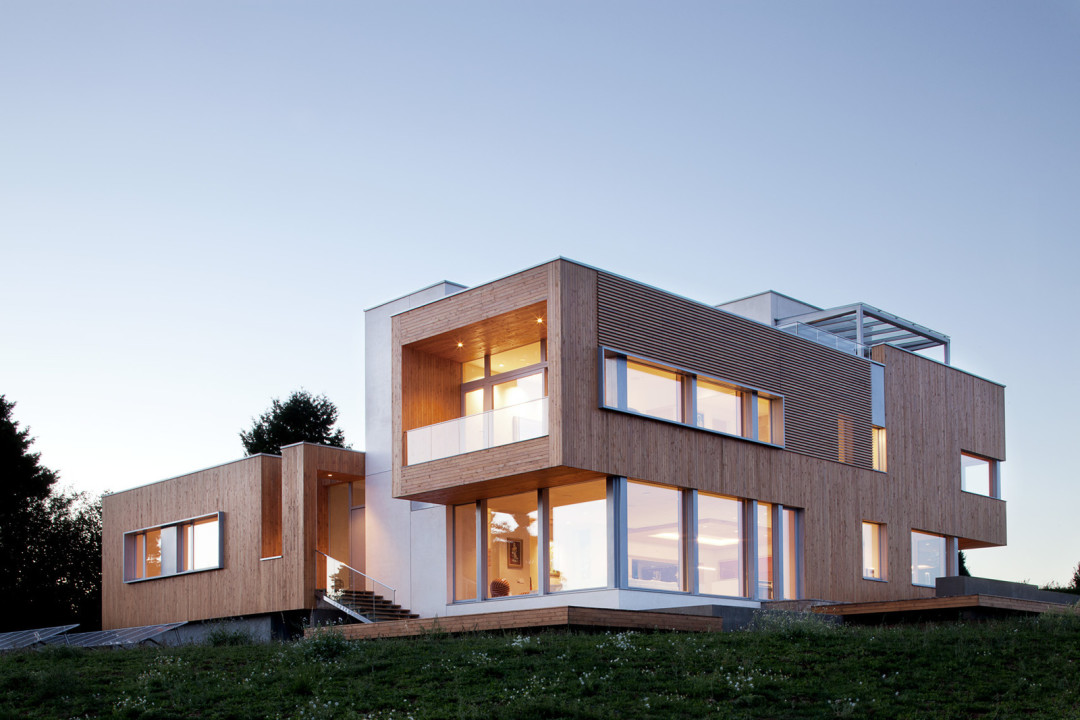
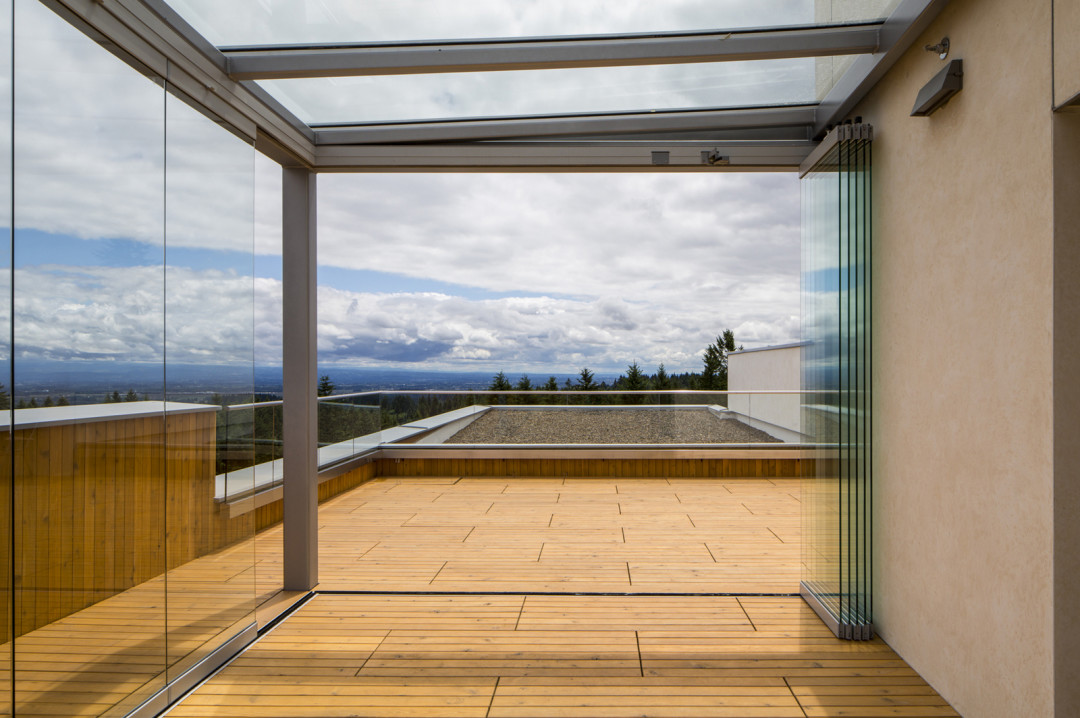
Photos by Jeff Amram (roof deck) and Jeremy Bitterman (all others).
